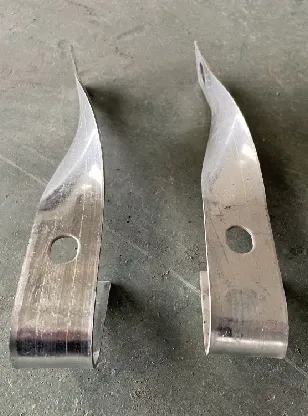loading...
- No. 9, Xingyuan South Street, Dongwaihuan Road, Zaoqiang County, Hengshui, Hebei, China
- admin@zjcomposites.com
- +86 15097380338
- Welcome to visit our website!
Innovative Applications and Benefits of GFRP Grating in Modern Construction Solutions
Understanding GFRP Grating A Versatile Solution for Modern Applications
In recent years, the use of Glass Fiber Reinforced Polymer (GFRP) grating has gained significant attention across various industries due to its unique combination of properties and versatile applications. GFRP grating consists of a composite material made from glass fibers and polymer resin, resulting in a lightweight, durable, and corrosion-resistant product that is ideal for demanding environments.
Composition and Properties
The primary ingredient of GFRP grating is glass fiber, which contributes to its strength and rigidity. The glass fibers are embedded within a polymer resin matrix, typically made of epoxy or vinyl ester, offering excellent chemical resistance. This composite structure results in a material that is not only lighter than traditional metals, such as steel or aluminum, but also provides superior resistance to rust and degradation from harsh chemicals and environmental conditions.
One of the standout properties of GFRP grating is its non-conductivity, making it an excellent choice for electrical applications where grounding is a concern. Additionally, its smooth surface helps reduce the risk of slips and falls, enhancing safety in both industrial and commercial settings.
Applications in Various Industries
GFRP grating is making its mark in several industries, including
1. Chemical Processing In environments where exposure to corrosive substances is a constant threat, GFRP grating provides a reliable option for flooring, walkways, and platforms. Its resistance to chemical attack ensures long-lasting performance, reducing maintenance costs and downtime.
2. Water Treatment Facilities The durability and moisture resistance of GFRP grating make it suitable for use in wastewater treatment plants, where traditional materials are prone to decay. GFRP’s non-corrosive nature helps to maintain the structural integrity of walkways and platforms over extended periods.
gfrp grating

3. Mining and Petrochemical The mining industry has also embraced GFRP grating for its lightweight properties, which facilitate easier installation and reduced transportation costs. In petrochemical applications, where safety is paramount, GFRP’s non-conductive nature is a major advantage.
4. Marine Applications The marine environment is notoriously harsh; thus, GFRP grating's resistance to saltwater and UV radiation makes it ideal for docks, piers, and other coastal structures. It can withstand the rigors of marine use without significant wear, stretching its lifespan considerably.
Environmental Considerations
As the world increasingly prioritizes sustainability, GFRP grating presents an environmentally friendly option. Its longevity and durability reduce the need for frequent replacements, thus conserving resources. Additionally, its manufacturing process can be less energy-intensive compared to traditional metal production, contributing to a lower carbon footprint.
Installation and Maintenance
Installing GFRP grating is often quicker and easier than traditional materials due to its lightweight nature. It can be cut and shaped on-site, allowing for custom solutions that fit specific needs. Furthermore, GFRP grating requires minimal maintenance, as it does not rust or corrode, leading to lower overall lifecycle costs.
Conclusion
The versatility and advantageous properties of GFRP grating make it an attractive option for a wide range of applications. From chemical processing to marine environments, its ability to withstand harsh conditions while maintaining structural integrity is unparalleled. As industries continue to seek innovative solutions that prioritize safety, resilience, and sustainability, GFRP grating will likely play a crucial role in shaping the future of infrastructure and design. Embracing such advanced materials is not only a step towards better engineering but also towards a more sustainable future.
-
The Rise of FRP Profiles: Strong, Lightweight, and Built to LastNewsJul.14,2025
-
SMC Panel Tanks: A Modern Water Storage Solution for All EnvironmentsNewsJul.14,2025
-
GRP Grating: A Modern Solution for Safe and Durable Access SystemsNewsJul.14,2025
-
Galvanized Steel Water Tanks: Durable, Reliable, and Ready for UseNewsJul.14,2025
-
FRP Mini Mesh Grating: The Safer, Smarter Flooring SolutionNewsJul.14,2025
-
Exploring FRP Vessels: Durable Solutions for Modern Fluid HandlingNewsJul.14,2025
-
GRP Structures: The Future of Lightweight, High-Performance EngineeringNewsJun.20,2025
